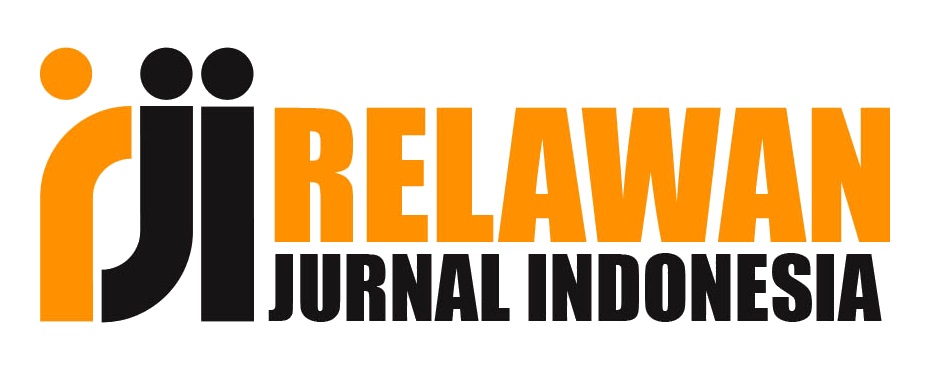Pengaruh penggunaan web module fisika berbasis NTT's local wisdom terhadap kemampuan berpikir kreatif
DOI:
https://doi.org/10.57176/jn.v1i1.4Keywords:
web module, NTT's local wisdom, kemampuan berpikir kreatifAbstract
Penelitian telah dilakukan untuk mengetahui keefektifan menggunakan modul web fisika berbasis local wisdom Nusa Tenggara Timur dalam peningkatan kemampuan berpikir kreatif pada siswa kelas X SMAN 3 Kota Kupang. Penelitian ini adalah penelitian eksperimental semu dengan pre-test post-test. Populasi dalam penelitian ini adalah siswa kelas X kepeminatan IPA SMA Negeri 3 Kupang yang berjumlah 13 kelas, sampel dari penelitian ini digunakan 2 buah kelas yaitu X MIPA 5 dan X MIPA 7, di mana siswa kelas X MIPA 5 yang terdiri dari 31 siswa sebagai kelas eksperimen dan siswa kelas X MIPA 7 yang terdiri dari 34 siswa sebagai kelas kontrol. Teknik pengumpulan data dalam penelitian ini dengan menggunakan soal pre test dan post test kemampuan berpikir siswa X MIPA pada materi Usaha dan Energi. Teknik analisis data yang digunakan adalah analisis data dengan N Gain dan analisis efek size. Hasil penelitian menunjukkan bahwa modul web berbasis local wisdom Nusa Tenggara Timur efektif sebagai sarana meningkatkan kemampuan berpikir kreatif. Efektivitas penggunaan modul web dapat dilihat dari analisis N gain kemampuan berpikir kreatif yang menunujukan nilai 0,62 untuk kelas eksperimen dan 0,39 untuk kelas kontrol. Sedangkan nilai efek size menunjukan nilai f = 0,40.
The research has been done to find out the effectiveness of using web module with East Nusa Tenggara local wisdom on the improvement of thinking ability of creative in student of SMA Negeri 3 kupang. This research was a Quasi-experimental research with pre-test post-test the equivalent control group, The population in this study were students of class X with interest in science at SMA Negeri 3 Kupang, totaling 13 classes and the sample of this study used 2 classes, namely X MIPA 5 and X MIPA 7, where students in class X MIPA 5 consisted of 31 students as the experimental class and students of class X MIPA 7 which consisted of 34 students as the control class. The data collection technique in this study was using pre-test and post-test questions about creative thinking for students' X MIPA on the subject of Usaha dan Energi (Effort and Energy). Data analysis techniques used are data analysis with N Gain and effect size analysis. The results showed that the web module with image representation and mathematically effective as a means of increasing the ability of creative thinking and conceptual understanding The effectiveness of web module use can be seen from the analysis of N gain ability of creative thinking and understanding of student concept and effect size analysis where the value of N gain ability of creative thinking of experimental class in a row is 0.62 whereas for control class N Gain is 0.39 effect size analysis with value f = 0.40 for the ability of creative thinking.
References
Arasasingham, R. D., Taagepera, M., Potter, F., Martorell, I., & Lonjers, S. (2005). Teaching with Technology Assessing the Effect of Web-Based Learning Tools on Student Understanding of Stoichiometry. 82(8), 1251–1262.
Arkiang, F. (2021). Analisis pembelajaran daring selama pandemi COVID-19 di daerah 3T (Nusa Tenggara Timur). Jurnal Pendidikan, 12(1), 57-64.
Autieri, S. M., Amirshokoohi, A., & Kazempour, M. (2016). The science-technology-society framework for achieving scientific literacy : an overview of the existing literature. 4(1), 75–89.
Daud, A. M., Omar, J., Turiman, P., & Osman, K. (2012). Creativity in Science Education. Procedia - Social and Behavioral Sciences, 59, 467–474. https://doi.org/10.1016/j.sbspro.2012.09.302
Dewi, I. N., Poedjiastoeti, S., & Prahani, B. K. (2017). Elsii learning model based local wisdom to improve students’ problem solving skills and scientific communication. 5(1), 107–118.
Eraikhuemen Ogumogu. (2014). AN ASSESSMENT OF SECONDARY SCHOOL PHYSICS TEACHERS CONCEPTUAL UNDERSTANDING OF FORCE AND MOTION IN EDO. 5(1), 253–262.
Hartini, S., & Dewantara, D. (2017). The effectiveness of physics learning material based on South Kalimantan local wisdom The Effectiveness of P hysics Learning Material Based o n South Kalimantan Local Wisdom. 070006(August). https://doi.org/10.1063/1.4995182
Karakter, J. P., & Hlm, L. U. N. Y. (2012). No Title. 1–18.
Kohl, P. B., & Finkelstein, N. D. (2006). Effects of representation on students solving physics problems: A fine-grained characterization. Physical Review Special Topics - Physics Education Research, 2(1), 1–12. https://doi.org/10.1103/PhysRevSTPER.2.010106
Kurniawati, A. A., Wahyuni, S., & Putra, P. D. A. (2017). Utilizing of Comic and Jember ’ s Local Wisdom as Integrated Science Learning Materials. 7(1), 47–50. https://doi.org/10.18178/ijssh.2017.7.1.793
Kutlu, B. N., & Gökdere, M. (2015). THE EFFECT OF PURDUE MODEL BASED SCIENCE TEACHING ON. 3(3), 589–600.
Laurens, T., Laamena, C., & Matitaputty, C. (2014). E – 66 Development a Set of Instructional Learning Based Realistic Mathematics Education and Local Wisdom. 1–6.
Lin, C. S., & Wu, R. Y. W. (2016). Effects of Web-Based creative thinking teaching on students’ creativity and learning outcome. Eurasia Journal of Mathematics, Science and Technology Education, 12(6), 1675–1684. https://doi.org/10.12973/eurasia.2016.1558a
Lin, C., & Wu, R. (2016). Effects of Web-Based Creative Thinking Teaching on Students ’ Creativity and Learning Outcome. 12(6), 1675–1684. https://doi.org/10.12973/eurasia.2016.1558a
Liu, G., Liu, Z., & Hwang, G. (2011). Computers & Education Developing multi-dimensional evaluation criteria for English learning websites with university students and professors. Computers & Education, 56(1), 65–79. https://doi.org/10.1016/j.compedu.2010.08.019
Oreta, A. W. C. (2000). Developing a Web-Based Learning Module in a Basic Civil Engineering Course ABSTRACT : Computer Applications in Engineering Education, 235–243.
Padmapriya, P. V. (2015). Effectiveness of Self Learning Modules on Achievement in Biology Among Secondary School Students. International Journal Of Education and Psychological Research (IJEPR), 4(2), 44–46.
Potvin, P., & Hasni, A. (2014). Studies in Science Education Interest , motivation and attitude towards science and technology at K-12 levels : a systematic review of 12 years of educational research. 7267. https://doi.org/10.1080/03057267.2014.881626
Raiyn, J. (2015). Assessment of adaptive PBL ’ s impact on HOT development of computer science students. Journal of Education and Practice, 6(30), 51–58.
Ramma, Y., Bholoa, A., Watts, M., & Nadal, P. S. (2017). Teaching and learning physics using technology : Making a case for the affective domain Teaching and learning physics using technology : Making a. Education Inquiry, 00(00), 1–27. https://doi.org/10.1080/20004508.2017.1343606
Rich, N. (2012). Introduction : why link Indigenous ways of knowing with the teaching of environmental studies and sciences ? 308–316. https://doi.org/10.1007/s13412-012-0098-4
Saglam-Arslan, A., & Devecioglu, Y. (2010). Student teachers’ levels of understanding and model of understanding about Newton’s laws of motion. Asia-Pacific Forum on Science Learning and Teaching, 11(1), 1–20.
Stelzer, T., Gladding, G., & Brookes, D. T. (2008). textbooks for learning introductory physics content. 1–21.
Stelzer, T., Gladding, G., Mestre, J. P., Brookes, D. T., Stelzer, T., Gladding, G., Mestre, J. P., & Brookes, D. T. (2013). Comparing the efficacy of multimedia modules with traditional textbooks for learning introductory physics content Comparing the efficacy of multimedia modules with traditional textbooks for learning introductory physics content. 184(2009). https://doi.org/10.1119/1.3028204
Surya, M., & Islamic, B. (2018). The Development of Interactive Mathematics Learning Material Based on Local Wisdom with The Development of Interactive Mathematics Learning Material Based on Local Wisdom with . swf Format. 0–6.
Waldrip, B., & Rusdiana, D. (2012). Impact of Representational Approach on the Improvement of Students ’ Understanding of. 8(22), 161–173.
Yager, R. E. (2008). Comparison of Student Learning Outcomes in Middle School Science Classes with an STS Approach and a Typical Textbook Dominated Approach. 31(7).
Downloads
Published
How to Cite
Issue
Section
License
Copyright (c) 2021 Rabya Mulyawati Ahmad, Fajeri Arkiang

This work is licensed under a Creative Commons Attribution-ShareAlike 4.0 International License.
You are free to:
- Share — copy and redistribute the material in any medium or format for any purpose, even commercially.
- Adapt — remix, transform, and build upon the material for any purpose, even commercially.
- The licensor cannot revoke these freedoms as long as you follow the license terms.
Under the following terms:
- Attribution — You must give appropriate credit , provide a link to the license, and indicate if changes were made . You may do so in any reasonable manner, but not in any way that suggests the licensor endorses you or your use.
- ShareAlike — If you remix, transform, or build upon the material, you must distribute your contributions under the same license as the original.
- No additional restrictions — You may not apply legal terms or technological measures that legally restrict others from doing anything the license permits.
Notices:
You do not have to comply with the license for elements of the material in the public domain or where your use is permitted by an applicable exception or limitation .
No warranties are given. The license may not give you all of the permissions necessary for your intended use. For example, other rights such as publicity, privacy, or moral rights may limit how you use the material.















